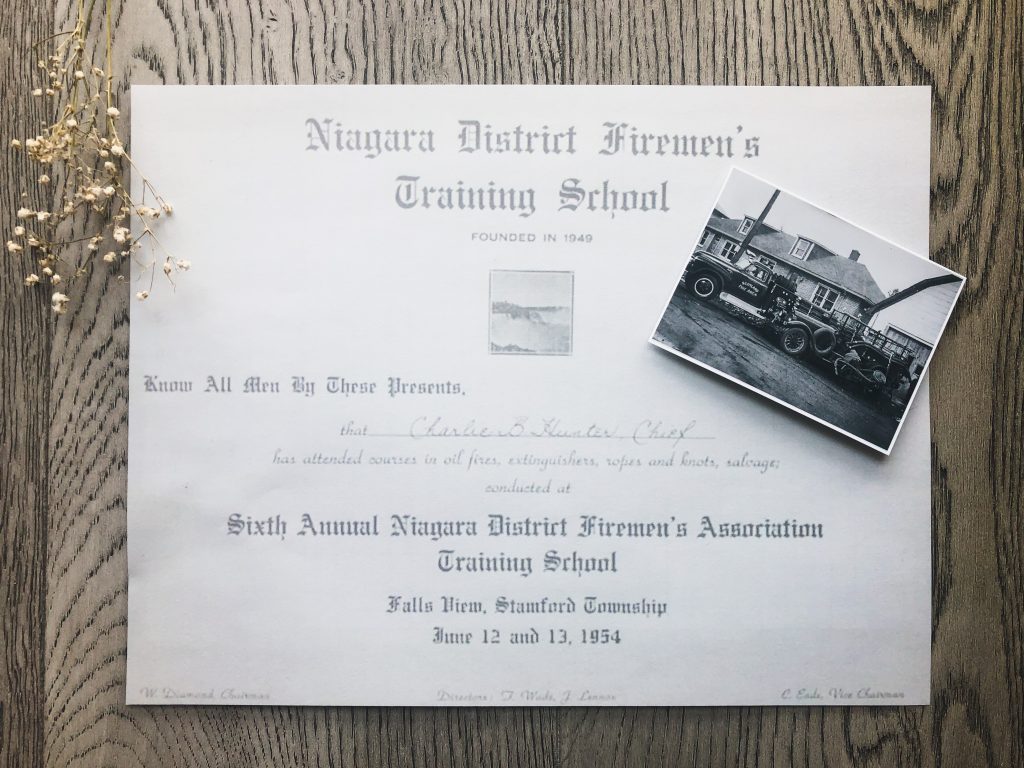
Hello and welcome to today’s blog post.
This is another self-contained post, not entirely in sequence with the rest of Charlie’s Story. The History of Scotland Fire Area Protection will exist as an appendix in the book. Included here is a personal note from Charlie about his time as a firefighter, then a small excerpt from The History of Scotland Fire Area Protection which was written by Charlie in 2013. The full History can be found under the Appendices tab up above for those who love a deep dive into the details!
“My hobby was the Volunteer Fire Department. Many nights were spent in training and keeping the equipment in good shape as well as fighting fires. I began to look after the fire truck in 1941, and was made Chief of the Scotland Fire Area in 1951. I spent 55 years in service, including 46 years as Fire Chief of the Fire Department, retiring December 31, 1996. I was honoured with a surprise Retirement Party on September 27, 1997 at the South Brant Legion in Oakland. Even to this day, when I hear the siren or know that the fire trucks have been called out, I want to know where and how and all about it!“
And from the History of the Scotland Fire Area Protection:
In 1960 a new three bay Fire Hall was built at 43 Simcoe Street in Scotland. At this time the Board members were Bruce Hill, Oscar Gibson and Clayton Smith. The Board sold the Buick car and hand cart. The same year the Fire Area Board installed a Bell Telephone system which had a phone in the Fire Hall and the same line in seven homes of Firefighters so any one, wives or men, could take the call and in turn set the siren off. The first firefighter to the hall would mark down instructions on a blackboard. As soon as another person arrived they would proceed with a truck to the scene.
In 1965 a Mutual Aid Fire Radio System was installed in the County of Brant. Scotland had two-way radio equipped trucks which participated in this system. Calls for Mutual Aid between departments were handled by radio. Central Control in Brantford starts the siren of the responding department by radio tone. It also turns on the two-way radio in the pumper and in seconds transmits the sound of siren back to Central Control to confirm the siren response. The volunteers go to the hall, call on the two-way radio in the pumper and receive their instructions as to where and what the Mutual Aid call is. After writing instructions on the blackboard in the hall for the rest of the firefighters, the truck proceeds to the emergency. The radio can be used to communicate between trucks at any time and thus improve communications while at a fire. Eventually we were supplied with pagers. In 1985, because the siren motor failed and it was the same cost to change to pagers, equipment was installed in the Scotland Station to activate the pagers and alert the firefighters.
Such interesting “behind the scenes” insights.
Til next time,
xo
andrea